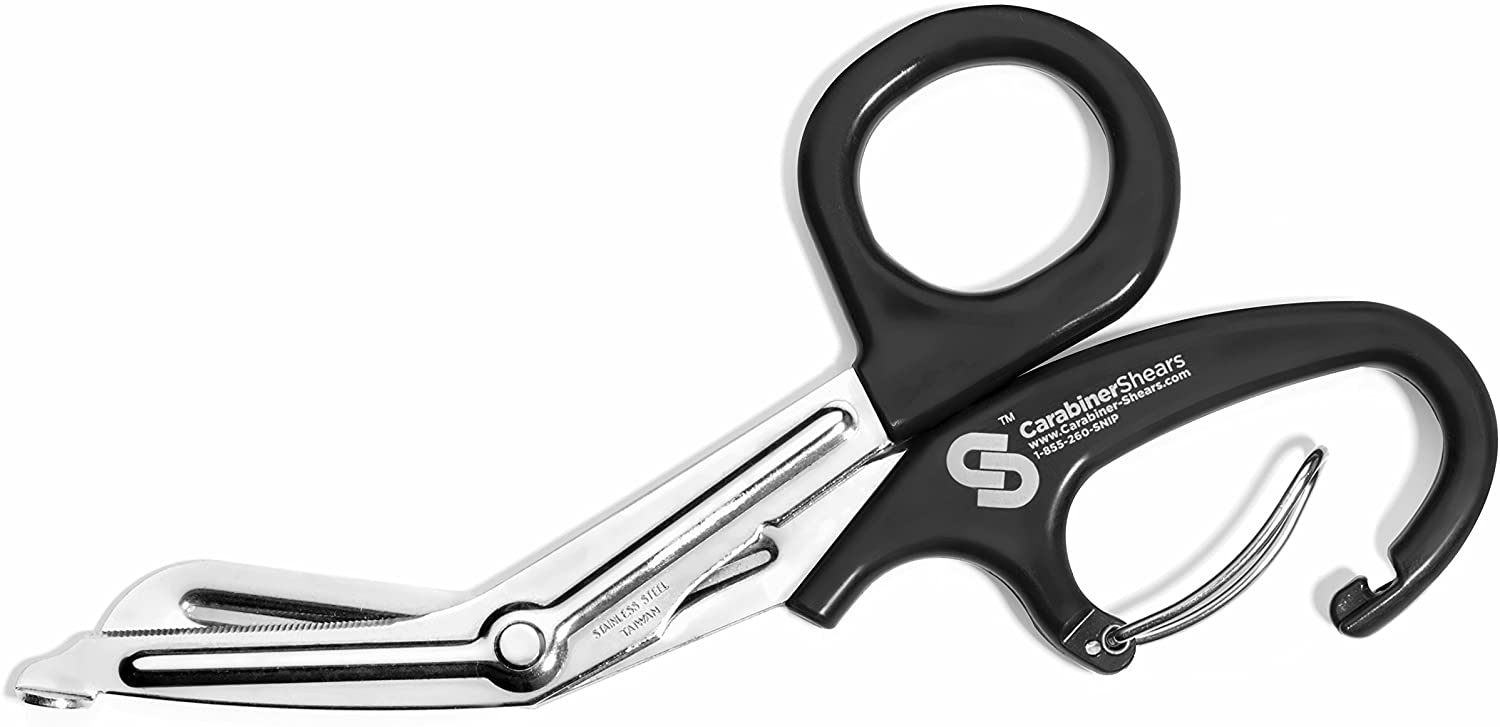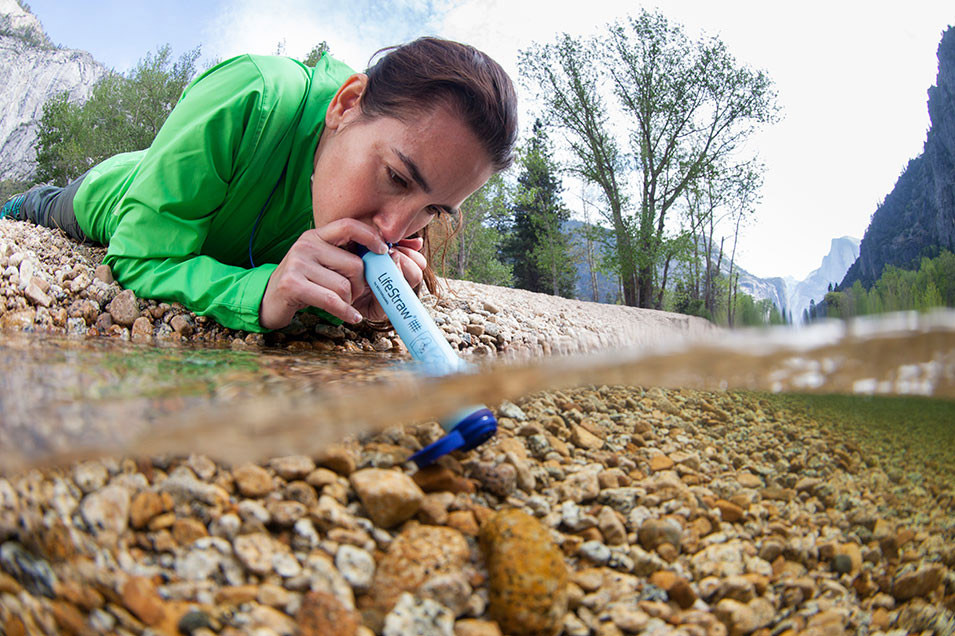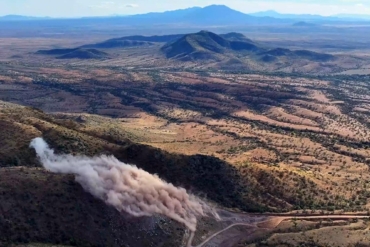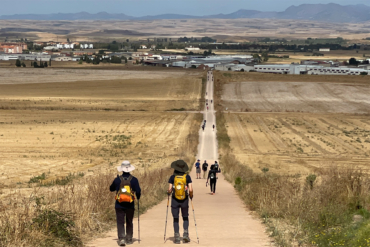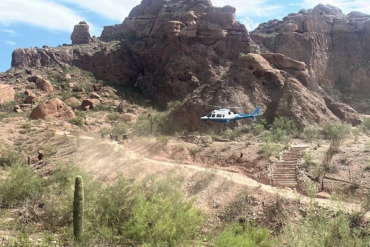If you plan to spend time outdoors, you need a first-aid kit. Use our first-aid kit checklist to ensure you take all the essentials with you.
If everything goes to plan on your outdoor adventures, you might not need a first-aid kit. But we all know that isn’t always the case. In most situations, a first-aid kit can easily make an outdoor experience more comfortable. And in some cases, that kit can save a life by staunching blood, keeping you warm, or calling for help.
With that in mind, we recommend you always bring at least a basic first-aid kit on your adventures. How much you put into that kit will depend on the duration, location, and risk of the trip.
If you’re doing a day hike close to civilization, you might just need some band-aids or moleskin for a blister or cut. However, if you’re going out into the backcountry for several days or weeks or doing riskier adventures like rock climbing or backcountry skiing, you’ll be thankful to have a bit more gear with you when you need it.
You can buy a ready-made first-aid kit with all the basics, which can often save time and money, but you’ll get a more personalized kit by building it out on your own. This way, you can tailor your supplies to what you’ll be doing and leave out things that don’t make sense.
Download Printable ChecklistThis checklist details a general kit for good practice. You’ll want to evaluate your specific situation, skill set, and risk level to get a better idea of how extensive you want to make your own first-aid kit.
Just as important as having the right gear is knowing how to use everything. Be sure you’re familiar with everything you add to your kit. You might also consider taking a class like the NOLS (National Outdoors Leadership School) Wilderness First Aid course.
Wound Care, Burns, and Blisters
Bandages and Antibiotic Ointment
Bandages will likely be the most common thing you’ll use in your first-aid kit for basic scratches and cuts. They will keep any open cuts from getting dirty and keep any blood contained.
There are several different types of bandages that you’ll want to include. NOLS specifically recommends knuckle and fingertip adhesive fabric bandages. The fabric in these bandages stretches with you, is more comfortable than plastic bandages, and stays in place longer.
Another option is 2nd Skin dressing, which will provide a protective cover over wounds or burns and is antiseptic, flexible, and waterproof.
For larger wounds, you’ll also want to consider butterfly bandages or wound-closure strips, sterile gauze pads, medical tape, hemostatic gauze for stopping blood, and self-adhering bandages.
Finally, some antibiotic ointment will help prevent infection and promote healing. To help clean any cuts or wounds, you’ll also want some antiseptic wipes or povidone-iodine solution. Before applying your bandage, swab the area with a bit of tincture of benzoin to help the bandage stick better.
Burns
For direct burns, the best thing you can do is get it under cold water. If it’s a bad burn, you may want to cover it with a bandage, use burn cream, or 2nd Skin dressing.
Blister Care
If you get a blister from your shoe, having that moleskin handy is going to make the rest of your trip 10 times more enjoyable. Moleskin can do wonders on blisters to block additional skin friction.
You can either get pre-cut pads or patches that you can cut to whatever shape you need. 2nd Skin dressing can also help for blisters as well.
Fractures and Sprains
Whether it’s a nasty compound fracture or a sprained ankle, these will most likely cut your adventure short. In most cases, you’ll want to get to the nearest hospital and get some professional medical attention. For a small sprain, you might be fine with a non-urgent doctor’s visit.
Either way, your goal in the backcountry is to compress, immobilize, and manage pain.
Elastic Bandage
An elastic bandage (think ACE bandage) with a closure system may be all you need for a basic ankle or wrist sprain. For fractures or more intense sprains, you can also use the bandage to help secure a splint or ice pack.
When wrapping the bandage, you want it to be snug to reduce swelling, but not so tight it cuts off circulation.
Triangular Bandage
For anything to do with arms, shoulders, or collarbones, a triangular bandage will come in handy as a sling. Triangular bandages can also work as a swathe, tourniquet, wrap, and myriad other uses in a pinch.
Splints
For expeditions farther out, including a splint in your kit will help make immobilizing any fracture much easier. A SAM splint is a lightweight, versatile, reusable, and waterproof option for stabilizing limb fractures.
A finger splint may also be a good idea to consider. Sure, you can probably improvise a splint or bandage two fingers together, but a simple SAM finger splint may also be handy (literally).
Medications
Ibuprofen
Ibuprofen goes right along with sprains and fractures for pain management and reducing swelling, but it’s also just a good all-around option for pain management, especially with inflammation. Headache? Ibuprofen. Cramps? Ibuprofen. Sore muscles? Ibuprofen. It can also reduce fever, though acetaminophen might work better for that.
Acetaminophen
The nice thing about having both acetaminophen and ibuprofen is you can take them together. Both can relieve pain and reduce fever, but they act in different ways, so one may work better for you or they can build on each other.
Unlike ibuprofen, acetaminophen is not an anti-inflammatory, so it may work better for issues like fever, mild migraines, or additional pain relief.
Allergy Relief
For those who suffer from hay fever or other minor allergies, bringing along some antihistamine tablets like cetirizine or loratadine is essential.
For more intense allergic reactions like a bee sting, Benadryl is a good option. If you have anaphylactic reactions to bee stings or certain foods, you might also consider bringing an epinephrine auto-injector (EpiPen).
Anti-Itch Cream
If you’re one of those people mosquitoes love or you get bad reactions with bug bites, you know the struggle. In those cases, anti-itch cream can be the difference between horrible, constant itchiness and just a mildly uncomfortable bump.
You can also use single-use sting relief wipes, which help prevent itchiness and infection.
Along those same lines, if you know you’re going into especially buggy areas, you’ll also want to include your favorite bug repellent.
Loperamide
Loperamide is an anti-diarrheal medication. I know no one really wants to talk about it, but if you spend a long enough time in the outdoors, you’ll at least hear diarrhea horror stories (if not experience one).
In the best case, it’s messy and uncomfortable to have stomach issues in the backcountry. In the worst case, it can be life-threatening because of dehydration. And in these cases, Diamode might be able to help get your shit together.
Regardless, you’ll want to be extra sure to drink plenty of water and potentially include an electrolyte solution or rehydration tablet.
Aspirin
Aspirin can help to treat pain, fever, headache, and inflammation. But the main reason to include aspirin in your first-aid kit is if you think you or someone in your party is having a heart attack.
In this situation, the Mayo Clinic recommends calling for emergency medical help immediately, then chewing a regular-strength aspirin.
Prescription Medications
If you have specific prescription medications that you take daily or for specific occasions, you’ll want to include these too. Take the amount you’d need for however long you expect to be gone, plus a few more, just in case you lose one or something doesn’t go as planned.
Instruments
For most of these tools, you likely won’t have to replace them after every use like you would for gauze or bandages.
EMT Shears
EMT or trauma shears have a wide, blunt tip to reduce the risk of cutting the patient. These scissors make it easy to quickly cut clothes out of the way or cut off old bandages. This lightweight version also includes a small pair of tweezers.
Forceps
Forceps or tweezers are useful for splinters but even more essential for removing ticks.
According to the CDC, to remove a tick, use your fine-tipped tweezers to grab the tick as close to the skin as possible. Then, pull upward with steady, even pressure. If some of the mouth stays in your skin, pick it out with tweezers; if you can’t, just clean and let the skin heal.
Thermometer
A fever can mean a variety of different things but is often a sign of some sort of infection. If you get a fever on your adventure, it might be a good idea to head back to civilization just in case it gets worse.
Besides, having a fever generally isn’t fun, and you probably won’t feel much like hiking or being very active anyway.
Safety Pins
Safety pins are generally useful in all sorts of improvising if something goes wrong in the backcountry. Specifically for first-aid, you can use them to secure bandage materials.
In other situations, they can also provide temporary repairs for backpacks, tents, or clothes.
Irrigation Syringe
If a wound needs cleaning, one of these syringes can help flush out the area without having to touch it. The syringe provides enough water pressure to successfully get out most contaminants.
Duct Tape
OK, you will have to replace duct tape after each use. Duct tape is so versatile for almost any emergency, it really deserves a place in your first-aid kit. Mountaineer Katie Bono even used it to protect her nose from getting frostbite on her Denali speed record.
Personal Protection
Especially given current events, personal protection equipment (PPE) has become a premium necessity. Under normal circumstances, you probably don’t need a surgical face mask or N95 in your first-aid kit, but you’ll still want some protection to avoid cross-contamination between body fluids.
Gloves
Whenever there’s blood or any other body fluids involved, gloves will help keep you and your patient safe from additional infection. A pair of disposable nitrile gloves are ideal because they’re stronger than latex and those with latex sensitivity can still use them.
CPR Face Shield
This CPR mask kit comes with a hard case to keep the mask safe, non-latex gloves, and an alcohol wipe. Using a face shield like this when doing CPR helps keep you and your patient safe from catching anything that the other might have.
Add-ons to Consider
Storage Bag
Help keep track of your new high-quality first-aid kit with a waterproof container or bag. A specialty pack like this one with different organizational pockets will make it easier to find what you need quickly. If you’re doing more water adventures, a dry bag will likely suit your needs more.
Portable Battery Pack
In many cases, using your phone to call for help may be the most important step you can take. If you’re phone’s dead, that’s going to be challenging. A small battery pack and charging cord should solve this problem; just make sure it’s fully charged before you head out.
Heat-Reflecting Blanket
If you’re going to be in colder temperatures, a lightweight emergency heat-reflecting blanket is a solid investment. This blanket reflects up to 90% of your body’s heat back to you and will protect against water and wind for one person. The bright orange color also makes it easy to spot for rescuers.
Personal Beacon or Satellite Messenger
A personal beacon is primarily for backcountry snow outings like backcountry skiing, snowboarding, snowshoeing, or high-alpine mountaineering. Some personal beacons also include a satellite messenger, which can send out an emergency message even when you don’t have service.
Water Purification
Whether you have some iodine tablets or a water filter like the LifeStraw, bringing some way to get clean water from any water source is important if you’re planning any long trip.
Final Notes
While this list is a good general guide, each kit will likely be a little different. Use common sense with how much you should pack. When in doubt, it’s safest to lean on the side of excess. Over time, you’ll likely start to hone in on what you use most.
Just remember that even if you don’t use something often, the one time you do need it may be worth carrying it on all the other trips too.
Johanna Flashman is a full-time outdoor and travel writer with a passion for climbing and environmental advocacy. World traveler and vagabond, Johanna spends her time traveling, climbing, writing, and learning new skills. She has a degree in English literature and a minor in biology focusing on animal conservation. Johanna writes for several different publications including Climbing, Outside, and SELF. To learn more about her, you can visit her website.




